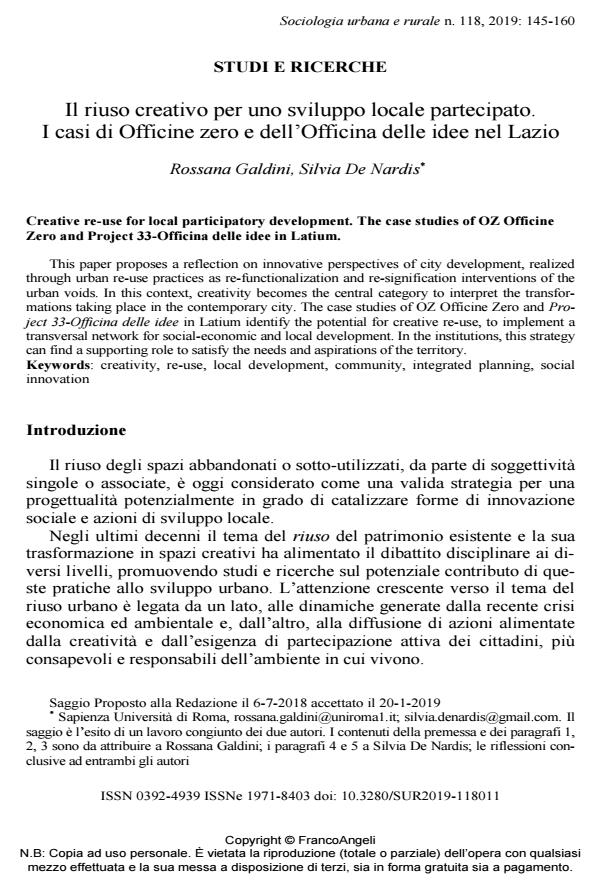Creative re-use for local participatory development. The case studies of OZ Officine Ze-ro and Project 33-Officina delle idee in Latium.
Journal title SOCIOLOGIA URBANA E RURALE
Author/s Rossana Galdini, Silvia De Nardis
Publishing Year 2019 Issue 2019/118
Language Italian Pages 16 P. 145-160 File size 460 KB
DOI 10.3280/SUR2019-118011
DOI is like a bar code for intellectual property: to have more infomation
click here
Below, you can see the article first page
If you want to buy this article in PDF format, you can do it, following the instructions to buy download credits

FrancoAngeli is member of Publishers International Linking Association, Inc (PILA), a not-for-profit association which run the CrossRef service enabling links to and from online scholarly content.
This paper proposes a reflection on innovative perspectives of city development, realized through urban re-use practices as re-functionalization and re-signification interventions of the urban voids. In this context, creativity becomes the central category to interpret the transfor-mations taking place in the contemporary city. The case studies of OZ Officine Zero and Pro-ject 33-Officina delle idee in Latium identify the potential for creative re-use, to implement a transversal network for social-economic and local development. In the institutions, this strate-gy can find a supporting role to satisfy the needs and aspirations of the territory.
Keywords: Creativity, re-use, local development, community, integrated planning, social inno-vation
- Urban informality and users-led social innovation: Challenges and opportunities for the future human centred city Rossana Galdini, Silvia De Nardis, in Futures 103170/2023 pp.103170
DOI: 10.1016/j.futures.2023.103170
Rossana Galdini, Silvia De Nardis, Il riuso creativo per uno sviluppo locale partecipato. I casi di Officine zero e dell’Officina delle idee nel Lazio in "SOCIOLOGIA URBANA E RURALE" 118/2019, pp 145-160, DOI: 10.3280/SUR2019-118011